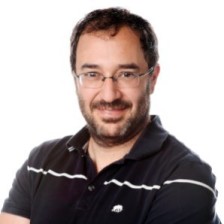My father is Prof. Charis Roussos. He’s currently 78 years old. And he’s a legendary figure.
To make Prof. Roussos’s impact tangible, let’s compare how set designers imagined the future of hospital medicine.
In 1966, the set designers of the sci-fi show Star Trek imagined the medlab of ~2254 looked like this.

The hospital was a single doctor with a digital chart.
But in 2009, the set designers for the film Star Trek imagined the medlab in 2233 looking like this.

Notice the ventilator, the machines surrounding the hospital bed? Prof. Roussos made them a necessary part of medicine.
But why did this ventilator become so ubiquitous in just 43 years?
Before his research, there was this thing called “shock.” Patients would enter “shock” and die. And the why was a mystery.
But its existence meant that a whole class of things we take for granted are impossible. Surgeries that could save your life but might lead to “shock” were very risky.
But was shock?
He and his teams proved that shock happened when blood pressure dropped.
Let me explain.
Typically you have a specific volume of oxygenated blood pumping through your body. We all know that the heart is a muscle, and we all know about the lungs, but what we didn’t realize was that there were some equally if not more essential muscles, “the lung muscles or the thoracic muscles.”
The body needs oxygen; otherwise, it dies. And without the lung muscles moving, you don’t breathe and die.
But for the lung muscles to move, they need oxygen as well.
Under normal conditions, this is not a problem. There is enough oxygen coming in and enough blood going around for everyone.
But when a patient is under distress, and there is less blood to go around, the brain needs to make some tradeoffs. Well, it can’t stop breathing, so it keeps the lungs working and starves everything else, including itself.
But how much blood do these lungs need? Well, about 25% of the total blood flow.
So what was shock – less blood being pumped through the heart meant less oxygenated blood for everyone, which meant that vital organs started to fail, which led to death. To deal with that, the brain then tells the lung muscles, “WORK HARDER,” and sends even more blood, and the lungs work harder, and vital organs get further starved. . Until they are exhausted, and the brain realize it can do nothing, gives up, and the patient dies.
Shocking.
These lung muscles were the key to keeping people alive!
But how to do that? Well, if the brain only cared about oxygen, what if we fed the patient oxygen or artificially moved the lungs?
And that’s where ventilators come in.
What if we used ventilators to move the lungs artificially, allowing more blood to flow to other parts of the body?
That simple idea saved people who would otherwise have died and enabled surgeries and procedures that in the past were too risky.
You can hear him talk about this here.

Leave a Reply